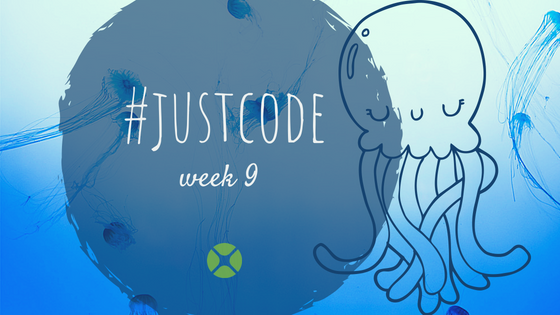It’s week 12 of #JustCode and I’m in in Munich, Germany at the MBS Xojo Developer Conference! I’ve never been to Germany and had no idea what the temperature would be, so instead of using the Weather Channel, I found a web API called OpenWeatherMap and built an iOS app to fetch the weather for display in a table. I even implemented the new table refresh feature added to Xojo 2018r2.
Comments closedXojo Programming Blog Posts
Whether you are looking to learn something new or perhaps just looking for some inspiration, podcasts can be a great investment of your time.
Check the points in bold under each podcast to see what its focus is.
Comments closedFor #JustCode week 11, I’ve finished a project I’ve been working on for several months. This project is a simple app that you can use to write and run your own scripts using Xojo code on the Raspberry Pi. I call it Xojo Dojo.
Comments closedFor the 10th week of the #JustCode Challenge I took a look at networking. For my project this week I’ve created a networked version of the Combat game, which has two tanks on the screen shooting at each other. The network version allows you to control one tank with the app running on your computer and someone else to control the other tank with the app running on their computer. I call it NetTank.
Comments closedAlthough Xojo does not have a built-in method to format XML text, you can use XSLT to do this for you. XSLT stands for eXtensible Stylesheet Language. This XSLT can be used to format XML:
<?xml version="1.0" encoding="UTF-8"?> <xsl:transform version="1.0" xmlns:xsl="http://www.w3.org/1999/XSL/Transform"> <xsl:output method="xml" indent="yes" /> <xsl:template match="/"> <xsl:copy-of select="/" /> </xsl:template> </xsl:transform>
To use this with Xojo, add a module to your project (name it XMLExtensions), add a String constant to the module (call it kXSLTFormat) and copy the above XSLT into the constant.
Comments closedWe’re wrapping up week 9 of #JustCode with a web app that demonstrates a web service, JSON and SQLite. The web app functions as both an app with a UI and a web service. It lets you enter your own quotes which are saved in a SQLite database. The web service randomly fetches a quote and returns it as JSON.
Comments closedA long, long time ago (1989) one of the first apps I ever made was an app launcher for the Atari ST. I called it JumpSTART. I originally wrote it in GFA BASIC and then later re-implemented it in Pascal (OSS Personal Pascal, technically).
When I got my first modem I went online with Genie and Delphi and uploaded JumpSTART as freeware. Even though it was freeware, I got a few checks in the mail from people that liked it.
I was reminded of JumpSTART when I saw my dock getting crowed. I thought replicating JumpSTART in Xojo would be a good project for week 8 of #JustCode. Though let’s just call it JumpStart this time around.
Comments closedXojo 2018 Release 2 brings several improvements to iOS features such as iOSTable, iOSView and more.
Comments closedAs many know, I’m a big baseball fan. I was recently at Sea Dogs game (our local AA minor league team) and was sitting behind home plate alongside many scouts who were carefully watching the pitchers. I noticed several were tracking pitch counts using an app on a tablet or laptop. I thought that would make for an interesting app to make in Xojo, so this week I’ve made an iOS app (I’m on an iOS roll it seems) to track the location of pitches, similar to what I observed the scouts using.
The app shows a grid of the strike zone and you tap where the pitch was. You can use the buttons on the bottom to mark the pitch as a ball, strike or in play changing its color. Click the Reset button to clear the pitches for the next batter.
Comments closedFollow this tutorial to learn how to create active (clickable) words in a text of a TextArea control using the OOP Delegate design pattern, which allows you to dynamically change how your app will react when the user clicks on any of these active words. Best of all, this is cross-platform, so you can use it for macOS, Windows and Linux deployments!
Comments closed






